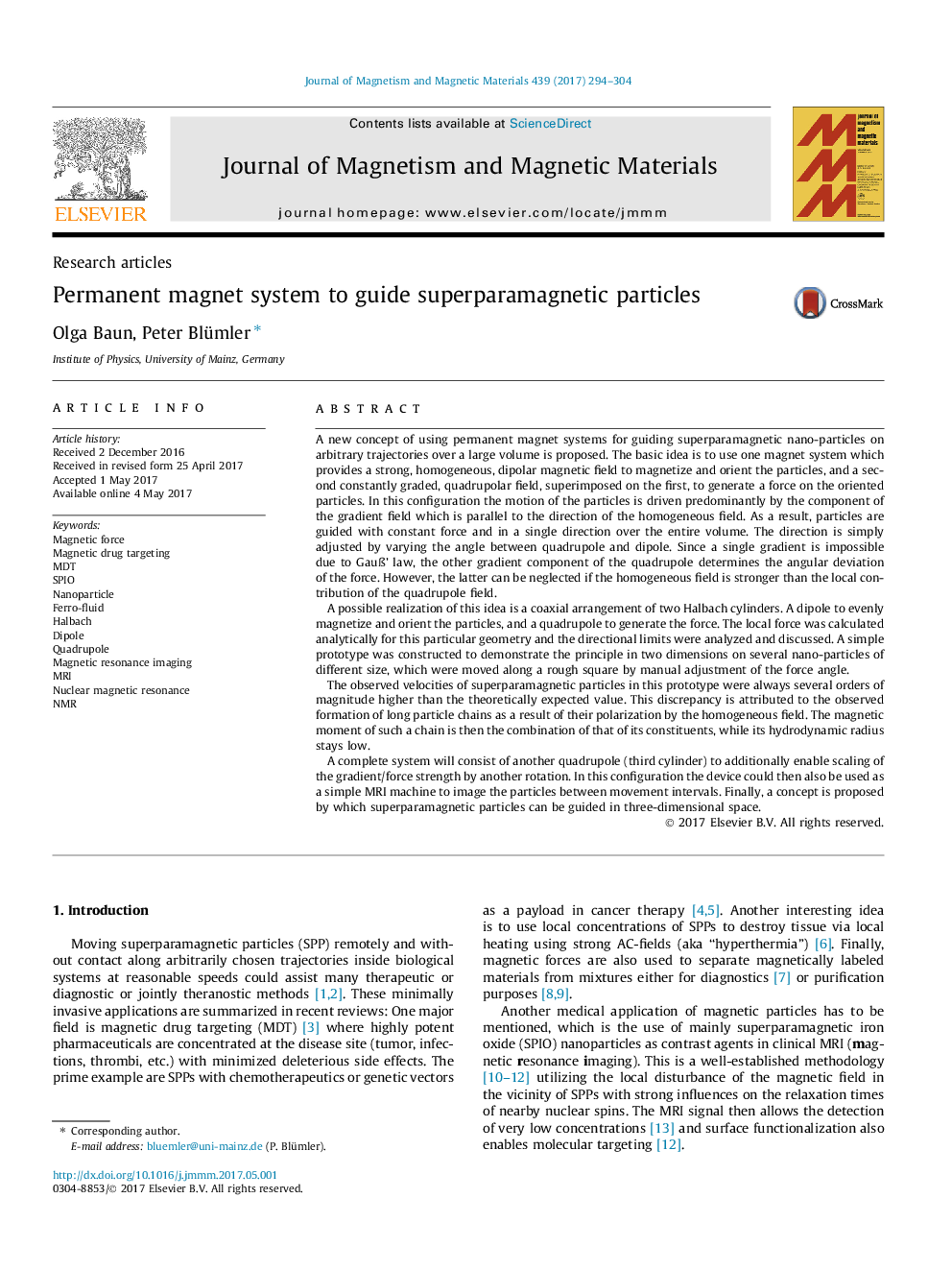| کد مقاله | کد نشریه | سال انتشار | مقاله انگلیسی | نسخه تمام متن |
|---|---|---|---|---|
| 5490845 | 1524782 | 2017 | 11 صفحه PDF | دانلود رایگان |
- Simple guiding device for (superpara-)magnetic particles solely made from permanent magnets.
- In principle constant magnetic force direction and strength over inner opening.
- Adjustable direction and strength of force by force-free rotation of magnet rings.
- Capability for position monitoring via magnetic resonance imaging by the same instrument.
- A first prototype generates surprisingly high particle velocities.
A new concept of using permanent magnet systems for guiding superparamagnetic nano-particles on arbitrary trajectories over a large volume is proposed. The basic idea is to use one magnet system which provides a strong, homogeneous, dipolar magnetic field to magnetize and orient the particles, and a second constantly graded, quadrupolar field, superimposed on the first, to generate a force on the oriented particles. In this configuration the motion of the particles is driven predominantly by the component of the gradient field which is parallel to the direction of the homogeneous field. As a result, particles are guided with constant force and in a single direction over the entire volume. The direction is simply adjusted by varying the angle between quadrupole and dipole. Since a single gradient is impossible due to GauÃ' law, the other gradient component of the quadrupole determines the angular deviation of the force. However, the latter can be neglected if the homogeneous field is stronger than the local contribution of the quadrupole field.A possible realization of this idea is a coaxial arrangement of two Halbach cylinders. A dipole to evenly magnetize and orient the particles, and a quadrupole to generate the force. The local force was calculated analytically for this particular geometry and the directional limits were analyzed and discussed. A simple prototype was constructed to demonstrate the principle in two dimensions on several nano-particles of different size, which were moved along a rough square by manual adjustment of the force angle.The observed velocities of superparamagnetic particles in this prototype were always several orders of magnitude higher than the theoretically expected value. This discrepancy is attributed to the observed formation of long particle chains as a result of their polarization by the homogeneous field. The magnetic moment of such a chain is then the combination of that of its constituents, while its hydrodynamic radius stays low.A complete system will consist of another quadrupole (third cylinder) to additionally enable scaling of the gradient/force strength by another rotation. In this configuration the device could then also be used as a simple MRI machine to image the particles between movement intervals. Finally, a concept is proposed by which superparamagnetic particles can be guided in three-dimensional space.
269
Journal: Journal of Magnetism and Magnetic Materials - Volume 439, 1 October 2017, Pages 294-304
